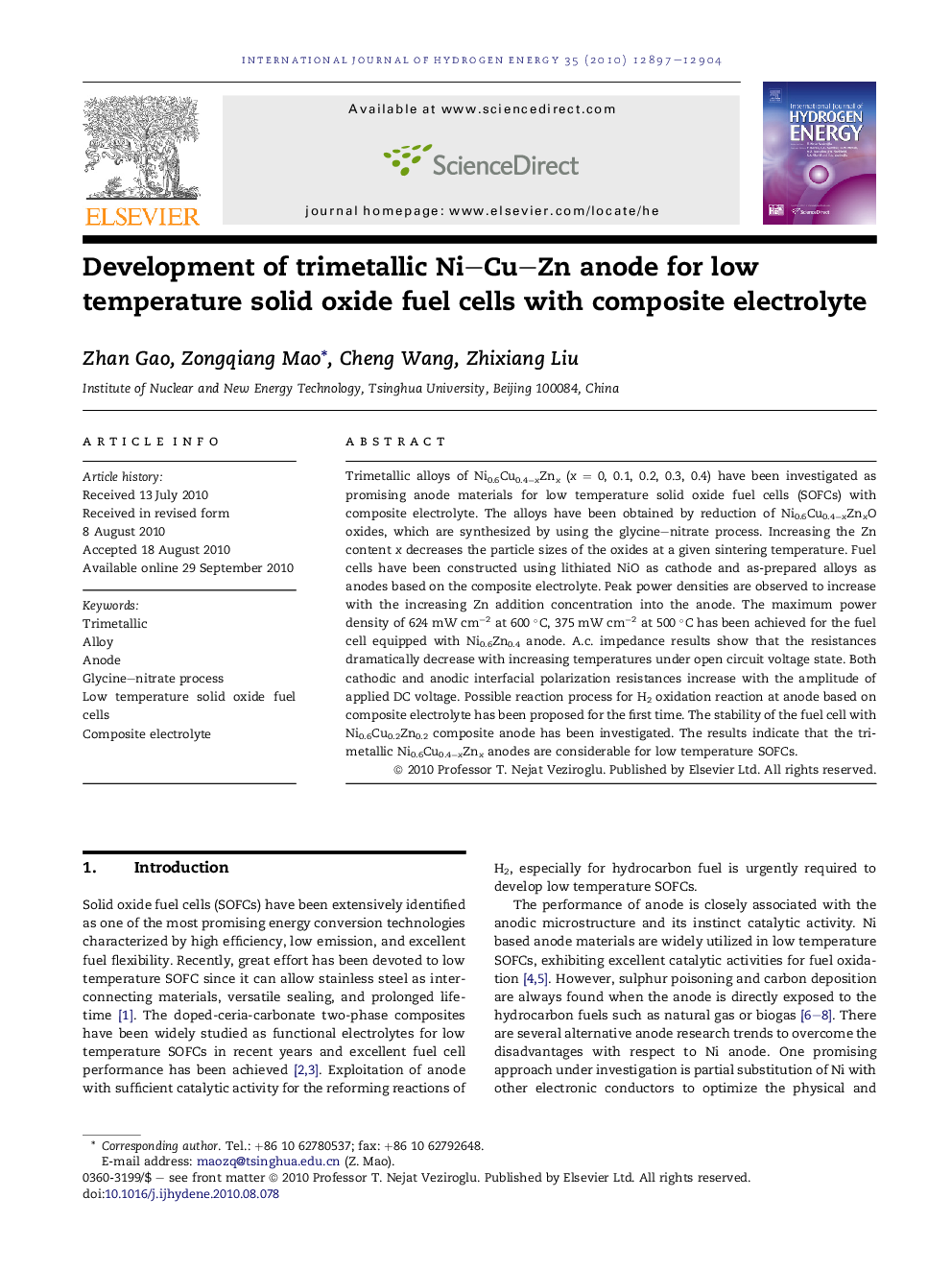| Article ID | Journal | Published Year | Pages | File Type |
|---|---|---|---|---|
| 1279932 | International Journal of Hydrogen Energy | 2010 | 8 Pages |
Trimetallic alloys of Ni0.6Cu0.4−xZnx (x = 0, 0.1, 0.2, 0.3, 0.4) have been investigated as promising anode materials for low temperature solid oxide fuel cells (SOFCs) with composite electrolyte. The alloys have been obtained by reduction of Ni0.6Cu0.4−xZnxO oxides, which are synthesized by using the glycine–nitrate process. Increasing the Zn content x decreases the particle sizes of the oxides at a given sintering temperature. Fuel cells have been constructed using lithiated NiO as cathode and as-prepared alloys as anodes based on the composite electrolyte. Peak power densities are observed to increase with the increasing Zn addition concentration into the anode. The maximum power density of 624 mW cm−2 at 600 °C, 375 mW cm−2 at 500 °C has been achieved for the fuel cell equipped with Ni0.6Zn0.4 anode. A.c. impedance results show that the resistances dramatically decrease with increasing temperatures under open circuit voltage state. Both cathodic and anodic interfacial polarization resistances increase with the amplitude of applied DC voltage. Possible reaction process for H2 oxidation reaction at anode based on composite electrolyte has been proposed for the first time. The stability of the fuel cell with Ni0.6Cu0.2Zn0.2 composite anode has been investigated. The results indicate that the trimetallic Ni0.6Cu0.4−xZnx anodes are considerable for low temperature SOFCs.
